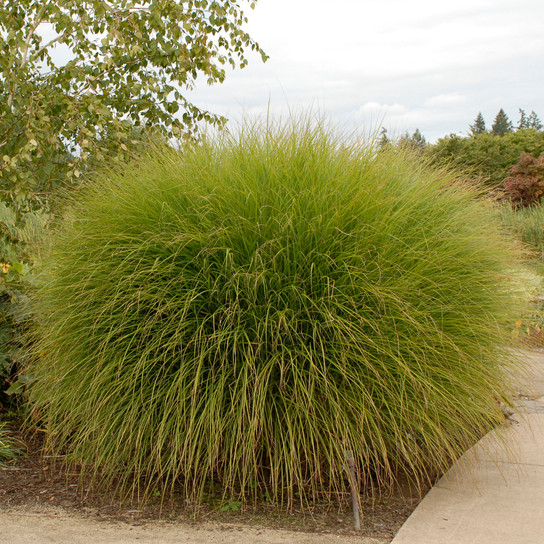
Maiden Grass
Uses:
- Mixed Shrub Border
- Meadows
- Privacy Screen
- Cut-Flower Arrangements
Features:
- Fine Texture & Fluffy Plumes
- Adds Height
- Low Maintenance & Adaptable
- Arching Vase Form
Sunlight:
- Partial Shade to Full Sun
- At Least 4 Hours of Direct Sunlight
Growing Zones:
- 5-9
- What is My Zone?
Maiden grass, also known as Miscanthus, is a large, warm-season grass that can reach 7 feet tall. It sends up light pink flower plumes in late summer, which dry to fluffy tan seed heads and are wonderful in flower arrangements. This grass provides height and fine texture, making it a perfect grass for creating privacy screens or a backdrop for perennial gardens. The dwarf varieties will grow happily in containers with flowering annuals and perennials.
About Maiden Grass

Chinese Silvergrass, Chinese Silver Grass, Eulalia, Japanese silver grass, Maiden Grass Susuki
East Asia
Ornamental Grasses
Deciduous
5 - 9
Gray/Silver, Pink, Red/Burgundy, White
Fall, Spring, Summer
Arching, Cascading, Clumping, Columnar, Erect
Small Mammals, Songbirds
Drought, Dry Soil, Humidity, Salt, Wet Soil, Wind
Deer
How To Use Maiden Grass In The Garden
Maiden grass, or Miscanthus sinensis, is an ornamental grass known for its arching stems and feathery plumes that emerge in late summer and persist through winter. Its size varies among cultivars, with some reaching up to 12 feet in height and 10 feet in width, while more compact varieties remain around 3 to 4 feet. This plant adapts to various soil types, including clay and sandy soils, and thrives in full sun with at least six hours of direct light daily. Thanks to deep roots, it tolerates brief dry spells and requires little maintenance.
Position these gracefully arching clumps in the background to fashion an airy screen, or group them in generous drifts for a meadow-like feel. Their gentle movement pairs well with sturdier perennials, creating contrast in both height and texture. They adapt nicely by water features, where the reflections can accentuate the foliage’s delicate form. For a more structured look, display them in large containers or anchor them as bookends near an entryway.
Maiden Grass Care
Maiden grass thrives in full sun, requiring at least six hours of direct sunlight daily. It prefers evenly moist, well-drained soil of average fertility and can tolerate clay, sandy, and poor soils, provided they drain well. When planting, select a sunny location with sufficient space for the grass to reach its mature size. Dig a hole just wide enough for the root ball, positioning the crown slightly above the soil surface to accommodate settling. Applying a layer of organic compost around the root zone helps conserve moisture.
In early spring, prune maiden grass by cutting back the previous year's growth to about six inches above the ground, making room for new growth. Use sharp, sterilized pruning shears or a power hedge trimmer, and wear protective clothing to handle the robust foliage. For winter care, especially in colder zones, mulch around the base to protect the crown from severe cold. When growing in containers, choose a frost-proof pot with large drainage holes and use potting soil designed for containers to prevent waterlogging.
Learn More About Maiden Grass Care

Maiden Grass Companion Plants
Companions for Maiden Grass should thrive in full sun, appreciate well‑drained soil that can dry between waterings, and peak in late summer when the grass sends up its silvery plumes. Hibiscus brings supersized blossoms that punctuate the grass’s vertical lines, and perennial sunflower mirrors its stature while supplying long‑season golden accents. Cotton‑candy inflorescences of Joe Pye Weed add a soft counterpoint to the upright blades, whereas dahlias contribute sustained, richly hued blooms that keep the planting lively right up to frost.





















